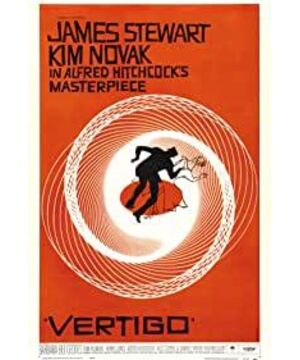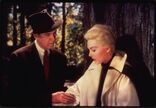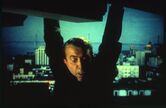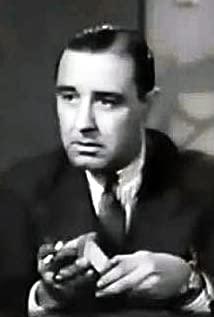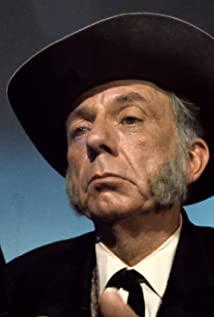"Body→Desire→Visual and Auditory Senses→Visual and Auditory Symbolization→Visual and Auditory Culture→Body" has been discussed repeatedly in our "Literary and Cultural Interpretation" course. In class lectures and discussions, we all accept that this is an effective way of interpreting culture. It seems that all cultural phenomena can be analyzed from the clues and perspectives of "body → desire → visual and auditory senses → visual and auditory symbolization → visual and auditory culture → body". This is very new to the author. Suddenly, the author wanted to explore the hidden meaning that I had never thought about before.
As the seventh art that integrates many art forms, film is a more specific and direct visual and auditory symbol than text, images, and music. And "the British scholar Laura Mulvey (Laura Mulvey) in the 1973 paper Visual Pleasure and Narrative Cinema ("Visual Pleasure and Narrative Cinema") combined psychoanalytic theory and the concept of "male gaze", put forward movie watching The mechanism of the argument brings the differences between the sexes into the discussion of movie viewing experience, and has a huge impact on feminist film research. She believes that the movie-watching experience is based on active (male) audience control and passive (female) screen objects based on the differences between the sexes. The combination of the scene and narrative on the screen drives the audience to adopt a male unconscious state of mind. "This exposes the androcentric nature of Hollywood movies that satisfy male audiences' voyeuristic desire and voyeurism. "Men relies on the power of vision to objectify and dehumanize women in the discourse of pornography/gender. "The French film theorist Christian Metz points out that the conditions of film screening create a suitable situation for peeping desire: the screen frame in the dark theater is like a keyhole. At the same time, as quoted by the teacher in the classroom, Laura Mulvey said, "Hitchcock's films often use "voyeurism" and "fetishism" as the themes, and swing between the two. "I will
use Hitchcock's Vertigo as an example to interpret how Hitchcock constructed the themes of "voyeurism" and "fetishism" in the movie Vertigo.
Before cutting into the movie Vertigo from the perspective of (broadly) voyeurism and fetishism, I would like to add one point, voyeurism, fetishism and "body → desire → visual and auditory senses → visual and auditory symbolic → visual What kind of connection is there between the clues of auditory culture → body? Provide a reasonable reason for my analysis below.
According to the author’s personal summary, the common point of voyeurism and fetishism in the broad sense is that they obtain sexual excitement by looking at objects and limbs of the opposite sex through self-imagination or other actions that only require self-fulfillment rather than actual sexual intercourse. And the satisfaction of desires. This similarity coincides with the above-mentioned interpretive thinking clues.
The combination of the two is that when the peeper germinates his desires based on his body, he hopes that his visual and auditory senses will be satisfied, and the peeper will obtain the visual and auditory culture through the acceptance of various visual and auditory symbols, so that his desires are satisfied, and his body will be satisfied. To be satisfied, without the need to obtain physical satisfaction through real behavior. This is different from the Ji people's peeping and greed for Miss Xian Xian in "Xia Yi Lou". The Ji people peeping is to marry Miss Xian Xian, so that their desires can be satisfied by actual behavior. However, both voyeurism and fetishism both produce and accept visual and auditory culture in order to satisfy the desire of the body. A less apt analogy, voyeurism and fetishism, is that a man wanted to show love to a woman by giving roses, but in the end he found that roses are better than lovers and made him feel love, so the man became a rose collection. The expert doesn't love the woman anymore. This is to intensify and deform normal desires.
Let's analyze Vertigo from the starting point of "voyeurism" and "fetishism". The movie Vertigo ("Dizziness"/"Victoria", 1958) is one of the most classic films of American director Alfred Hitchcock (Alfred Hitchcock), which contains Hitchcock's most Some commonly used movie elements have been commented by many netizens as "You don't understand Hitchcock without watching Vertigo." The BBC once commented that ""Victorius" is a delightful film. The production and plot structure of the film are full of traces of artificial carvings, which can be summed up in one word: pure Hitchcock." Ou Kirk himself is known as the "Master of Horror Movies", "Master of Suspense Movies" and "Floyd in the Film World".
Vertigo tells the story of the male protagonist John, a retired detective with a fear of heights, following his wife Madeline, who is suspected of being possessed by ghosts, for his friend Gavin. As everyone knows, John fell into the game designed by Gavin-Gavin murdered his wife Madeline, and found the heroine Judy to pretend to be his wife, making John a witness to Madeline's suicide by jumping off the building.
The opening short film of the movie is particularly interesting and needs research. At the beginning of the whole movie, the director has revealed the information of "voyeurism" and "fetishism".
It can be seen that the beginning of the movie is to examine all parts of a woman's face. The order is: the right side of the female face (only the mouth and nose). When the focal length is shortened, shake to the left. Position it on the mouth, the focal length remains unchanged, move slowly, pass the nose, and locate in the eyes. At this time, the eyes will look at the lens after scanning left and right. , With a confused look, pulled the lens closer, and continued to shake left while the focal length shortened. The eye that was frozen on the left, the hue began to change from natural to blood red, and the eyes suddenly widened in horror. Through such a careful examination of the various organs of a woman’s face, the director can see the tendency and themes of her voyeurism and fetishism-the voyeurism of the various parts of the female body (such close-ups can already be regarded as The effect of voyeurism) and infatuation, and through fantasy, to be satisfied (although this is still not concretely manifested).
The director's fetish is also reflected in the obsession with MacGuffin. An abstract graphic presentation at the beginning of the movie. Looking at all the movies, you will find that these abstract graphics have a lot of meaning.
It is not difficult to find that all the graphics symbolize the "vortex" and "dizziness", point the title, Vertigo. The author further believes that the first one is almost the same as the last one. The second and third symbols are "flower ball" and "flower ball". The fourth and fifth symbols are "traps" and "rings." The sixth and seventh symbolizes "double" and "correspondence." The last three are a combination of the above multiple images, which is the ultimate whirlpool, Vertigo. And when playing, the graphics are all rotating, which is also a symbol of movement. It seems that the director did not let go of an opening short film in just a few minutes, and tried his best to use up resources to express the theme. In later scenes, such elements are constantly reflected, and many of them are connected with the female body. The director's fetish is evident.
The first is "vortex". The swirling object, on the one hand, implies that the whole plot is basically a game, a whirlpool-like strategy that makes people trapped in it, on the other hand, it corresponds to the dizziness caused by John's fear of heights.
The vortex correspondence is represented in the swirling bun of Madeline, the swirling bun of the portrait, the world that John saw during the onset of acrophobia, and John's dream.
Even more ubiquitous is the image of the "flower group". This expands into circular, stacked props. The surrounding area of Madeline is surrounded by flowers. The artwork next to the portrait viewed by Madeline is the picture of the flower cluster, the bouquet held by Madeline, the bouquet on the portrait, etc. These are all directly expressed.
John's dreams, the scene where John met Judy later, and John insisted on buying Judy the flowers on the bouquet that Madeline once owned.
The hidden props are the flower-ball-shaped ceiling decorations, lights, and even carpet patterns of the hotel where Madeline went to, the ornaments in John's house, and Madeline's another flower-ball-shaped bun. These props are everywhere in the movie, let me marvel at the director's "fetish"!
Look carefully at the plot in the movie.
The director sets John as a detective and Gavin tracks Madeline (false). This character setting justified the "voyeurism" of the movie. From then on, all of John's tracking and peeping of Madeline, even the positive sidelines, contained the element of "peeping". This can be shown from the look in John's eyes when he peeped at Madeline and later when John was in front of Madeline.
It can be seen that the whole movie is based on the voyeurism of male vision. This becomes the biggest background and element of the movie. The director uses a shallow space to express, through close-ups of the actors, to highlight the expressions of the actors, especially John's look when he is peeping, and the very charming expression of Madeline when he is on the sidelines.
On the other hand, John's peek at Madeline has a sense of watching artworks. The concept of male/female, viewer/viewee, active/passive viewing mechanism is based on the relationship between female body and male gaze proposed by Berger (1972). In the eyes of voyeurs and fetishists, or in traditional Western culture, men’s scrutiny of women has always been with the habit of "appreciating works of art". In the movie, John's view of Madeline is like admiring a painting. In addition to the sneaky expression mentioned above, his expression is as meaningful as the talkative gentleman in the art museum turned his head and saw a beautiful nude or portrait. As Berger said, "This absurd phenomenon of flattering men reached its zenith in the open academic art of the 19th century. Politicians and businessmen gathered under portraits similar to the picture above, talking about it. Whenever someone feels wronged, they raise their eyes. Look up and seek solace from the pictures to affirm that you are a masculine man.” Nead applies Berger’s views to the Western female nude painting tradition. She pointed out that in Western nude painting, there are such males/watching/actively and with women. In the relationship of /being seen/showed, the female body in the painting is always offering her female color, waiting for the attention of the male. The female nudes described by the male painter actually project the male's preferences and ideals for the female to a considerable extent. The nudes are painted to a large extent to satisfy the different levels of voyeuristic desires of gentlemen who are willing to peep in reality. And the behavior of women themselves is always ready and correct for being peeped. "Men must observe women before deciding how to treat women. Therefore, the image of women in front of men determines the treatment she receives. In order to control this process more or less, women must be born with this kind of absorbing and internalizing vision. Therefore, how the female part of the "observer" treats the other part of the "observed", specifically showing how the outside world can and should treat her, this kind of self The treatment of her performance also builds the existence and demeanor of women. Every woman always needs to judge which is “permitted” or “not allowed” by her identity. Her every move, regardless of motive or Whatever the purpose is, they are all regarded as implying how others should treat her." "A woman’s demeanor is to express her opinion of herself and to define how others treat her. Her demeanor is reflected in her posture, voice, opinion, expression, dress, taste, and selected occasions-in fact, what she does All of them add to her demeanor.... Men observe women; women pay attention to being observed by others. This not only determines the majority of the relationship between men and women, but also determines the inner relationship of women themselves. Women's own observers are Male, and the observed person is female. Therefore, she turns herself into an object-and a very special visual object: the landscape." The same is true for Madeline in the movie. Every action of her has not escaped the gaze of John and the audience who is set as a male visual. Every action of her has become an art to be watched. In order for the director to express this, the Madeline in the movie is mostly shown from the side. The profile portrait is also a common form in Western art, just like the noble profile of the Queen of England in British coins, or just a Western traditional artwork. The one on the left below is the most classic scene of the movie, the Madeline spied on by John. This screen freezes for 4 seconds before and after, as shown in the left picture below. In the screen, Madeline is comparable to the Queen of England on the coin, as dignified as an artistic portrait, whether it is her expression, hair color, or background color, etc. It meets the standards of Western traditional art.
What's more interesting is that the director not only allows Madeline to show his profile frequently, he also uses the surrounding environment to form a natural "picture frame" for Madeline. Door frames, shadows, cracks in the door when peeping, etc., perfectly connect John's "voyeur" behavior with Madeline's "artwork" nature. For example, John's first time peeping at his friend Gavin and his "wife" Madeline, the camera starts with John's mid-range shot, slowly pulls back to become a panoramic shot, and slowly rolls to the left, freezing in a bright red background with many dark tones. Among the crowd, Madeline wearing a green evening dress is a large panoramic view with the visual center. At this time, the background sound changes from noise (noise) to music. The lens continues to slow down, push forward, and finally freezes in the panoramic view with Madeline's back as the center of the screen. .
After giving John a short mid-range close-up shot, the shot was again frozen at the Madeline for three seconds. At this time, the double door frame formed a natural picture frame, highlighting the Madeline in the "picture frame". And the bright red background, the green evening dress, and the sides are the traditional elements of Western painting, such as a portrait of a lady being viewed.
Through these two examples, the author found that in order to express John’s "voyeur", the director generally used the sequence of "John's (various) close-ups→Madeline's body→John's close-ups→Madeline's body" (and specific The number of times varies).
For example, John followed Madeline to the flower shop. The lens first followed John, and when John found Madeline, the lens became a subjective lens. The black door was pushed open, Madeline appeared in the center of the lens, and the lens no longer moved, and he kept "peeping" on Madeline. After a 20-second subjective lens observation, followed by a 5-second shot of John, as shown on the right, followed by John’s 10-second subjective shot, a peek at Madeline, and then a follow-up shot of John.
At the same time, peeping from the crack of the door, the crack of the door becomes a "picture frame". And when Madeline was in the mirror, the frame became a picture frame, and John's peeping eyes were very conspicuous on the right.
The director also paid great attention to the use of shadows, space, and car windows as picture frames. Look at the "artwork" through the mirror. The environment such as trees is used as the canvas background. The author believes that the director pays great attention to the use of mirrors to express voyeurism, and there are many times in the play that use mirrors to complete voyeurism. It was originally a peeping, coupled with the reflection of the mirror, another layer of occlusion is added, which is even more "tempt".
In addition, the camera's glance at Madeline's clothes, the freeze frame of Madeline while sleeping naked, and John's slightly sadistic dress-up and persecution of Judy are all manifestations of "voyeurism". Because a voyeur is also defined as a person who gains pleasure by witnessing the abuse of others. Judging from this definition, John’s constant "masochistic" towards Judy-forcing Judy to dress up like Madeline, and Judy's repeated "masochistic"-compromise and gradually change to the appearance of Madeline, so this They are all manifestations of "voyeurism" in Hitchcock's movies.
For the display of Madeline’s clothing, the author takes a long shot, starting from John’s panoramic shot, and slowly rolling along the direction of John’s leaning, sweeping to Madeline’s clothing, then slowly rolling, and finally freezes sleeping naked in Madeline. Bare shoulders in John's room. It shows "fetish" and "voyeurism". In addition, the door frame is also seen as a picture frame, showing Madeline like a work of art.
And, in the male protagonist John himself is a fetishist. John stared at Madeline's limbs from time to time during his interaction with Madeline. John foresaw Judy after Madeline (fake) died, and deliberately changed her to Madeline. As Judy said, John didn't want to touch Judy. All he wanted was to find Madeline's shadow on Judy. John is no longer in love with a living person, he is only infatuated with the concept of Madeline, just infatuated with Judy, who replaced Madeline like a "doll", and has a "thing" already. John made Judy have to dress like Madeline. And John often stares at women's clothing, limbs, hair and the like.
Staring at women's underwear and clothing, staring at Madeline's hand. Staring at Judy's hair later while transforming Judy. Look at the female torso while shopping.
At the same time, the voyeuristic peeking at women as works of art is also a form of fetishism. The picture is not listed in detail, see above.
On the other hand, the director's obsession with color is also a manifestation of "fetishism."
Perhaps the collision colors of red, green, blue, purple, and yellow are more attractive and “eye-catching” or better represent the unhealthy psychological condition. Or perhaps this color combination is more in line with the tradition of Western art. The director is very much in the play. I love the four colors and use them repeatedly to highlight the protagonists. For example, the clothes of Madeline and Judy are mostly green, appearing four times in total, purple (or gray-purple) appearing four times, and yellow, red and white appearing once each. John's weird dreams consist of large stains of red, green, purple, blue, and yellow. And this kind of setting has been reflected in the abstract graphics as early as in the opening short film-the colors of those abstract graphics are all these colors.
Among them, Madeline's car is also set to be green, the light passing through her silhouette when Judy speaks is green, the light hitting her body after Judy's change-up is also green, and when John first saw Madeline, she wore fresh Green evening dress, and when she saw Judy for the first time, she wore a bright green suit. After that, every time John and Judy date, Judy also wears green clothes. Green seems to be exclusive to Madeline (or Judy). At the same time, green has a ghostly meaning in the West. Perhaps the director's assignment of green to Madeline is also suggesting this, deliberately creating a ghostly feeling. And, the collision of red and green is obvious. For example, the green evening dress of Madeline is highlighted in the red background. The clothes of John and Madeline used to have red and green correspondences. The artwork that John followed Madeline passed by was also a red and green match. . All this is like "painting". It is really the director's irresistible love.
The director's method of constructing the themes of "voyeurism" and "fetishism" in Vertigo, what the author can explore is roughly expressed in these places. I don’t say much, the author knows that I am so insightful and can only make a rough exploration, so I have to take screenshots to illustrate the situation. Hope forgive me.
View more about Vertigo reviews


